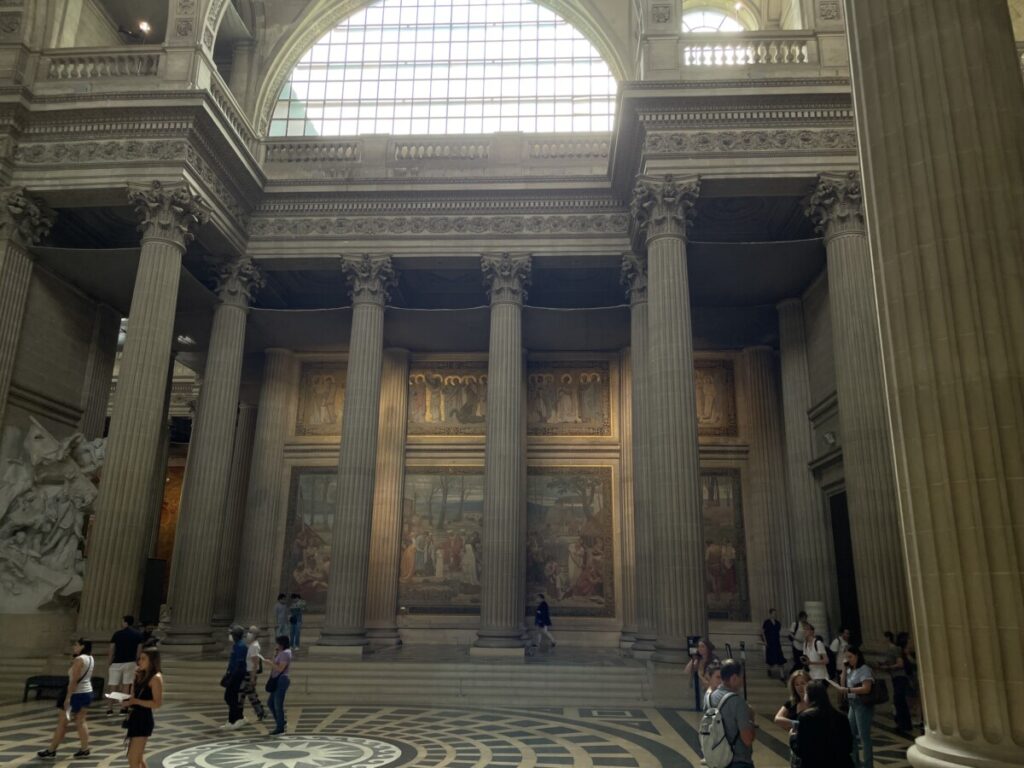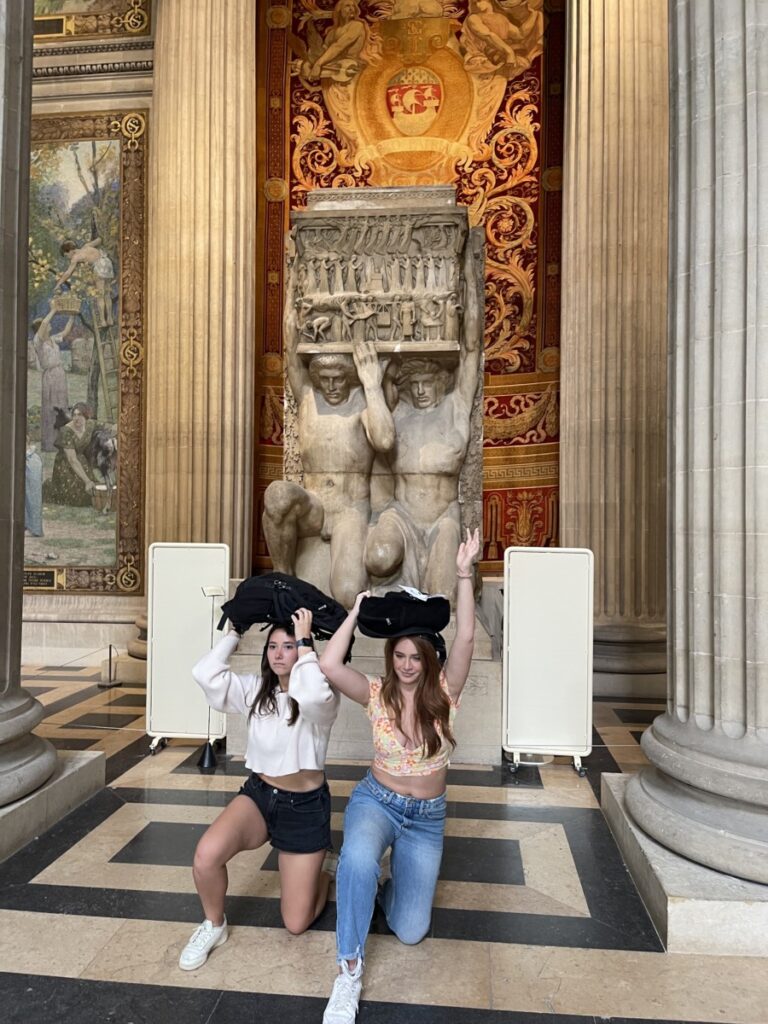By Ally Grubman
This week, our class had the pleasure of visiting the infamous, Pantheon. After taking a few great group photos, the class headed into the massive, beautiful building. The huge columns and incredible architecture were surely a sight to see. When walking through the doors and into the Pantheon itself, we were all stunned by the walls, ceilings, and incredible artwork throughout the whole building. After taking it all in, we went downstairs into the crypt, cooling off a little from the Paris heatwave we’re unfortunately going through. Walking through the crypts, it was so interesting to see the differences in mausoleums and the biographies of the people within them.

Interestingly, Marie Curie is one of the six women resting in the Pantheon. If you don’t know, Marie Curie was a physicist and chemist (born in 1867), who won two Nobel prizes in her time. Specifically, she discovered the elements polonium and radium. Her work helped lead to the development and use of radiotherapy for cancer treatment. Unfortunately, her work on radiation got the best of her and led to an early death. She developed leukemia from repetitive radiation exposure and passed away in 1934 when she was just 66. Even with her career being cut short, she was able to make immense strides in oncology treatments. Without her work and success, it is likely that cancer treatments would not be nearly as developed, or even possible, today. (Fun fact, Marie Curie’s coffin is lined with lead because her body’s still considered radioactive today)
And since then, our discoveries and technologies have only increased within the sphere of radiotherapy. It is believed that the discovery of radium has helped treat thousands of patients worldwide, only in the 80 years since it first became in use. However, these techniques have changed since the first uncovering of these elements. Mainly, radium is often no longer used in the way that Curie used it during her time. The radium and its radioactive properties are too much of a health concern and too easily mishandled. However, in certain careers and instances, radium is still successfully used safely and effectively.
But overall, the Pantheon strongly reflects French culture and history. With people such as Marie Curie, the Pantheon has an incredible hold on the historical context of France. Each person in the crypt had a unique influence on the overall values, traditions, and society of France. Would highly recommend a trip to the Pantheon if you ever get the opportunity!

Citations:
Gasinska, A.. (2016). The contribution of women to radiobiology: Marie Curie and beyond. Reports of Practical Oncology & Radiotherapy, 21(3), 250–258. https://doi.org/10.1016/j.rpor.2015.11.006
Mazeron, J. J., & Gerbaulet, A. (1999). Le centenaire de la découverte du radium [The centenary of the discovery of radium]. Cancer radiotherapie : journal de la Societe francaise de radiotherapie oncologique, 3(1), 19–29. https://doi.org/10.1016/s1278-3218(99)80031-6
